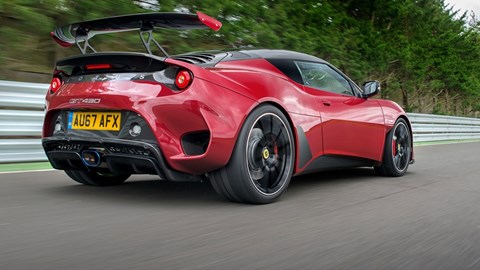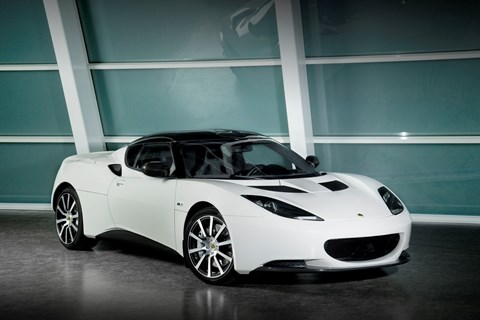► Two new sports cars by 2020
► And a Lotus SUV by 2022
► More jobs, investment by Geely
Lotus chief, Jean-Marc Gales, has stepped down from the Hethel-based performance car brand, with Geely Auto Group’s chief technical officer, Mr. Feng Qingfeng, taking the reins.
Gales has cited personal reasons for his resignation and will instead become Chief Strategic Advisor to Lotus Chairman, Daniel Donghui Li. Donghui Ll said that Gales ‘turned Lotus into profitability for the first time in the iconic brand’s history, with new industry leading products and unique business models.
Jean-Marc Gales dodges points after 102mph speeding offence
New Lotus boss, Mr Feng, said he was ‘honoured’ regarding the new role and stated: ‘I am confident that Lotus has an exciting opportunity to achieve its full potential as a luxury sports brand, based around its engineering legacy and future product pipeline.’
For more on that future product pipeline, keep reading for Nick Gibbs’ scoop on the next five years of Lotus’ product strategy. We’ll update this article with more news if any changes to the plan arise.
The Lotus product roadmap: two new sports cars by 2020, SUV by 2022
Lotus has announced the first two cars to be launched under Geely ownership and it’s good news: both are to be sports cars.
Both will arrive in 2020 with an SUV dropping in 2021 or 2022, Lotus chief executive Jean-Marc Gales told CAR this week. The two will be the first all-new cars from Lotus since the Evora started production in 2009.
We don’t know exactly what those two new cars will be, but Gales gave us a few clues. One is a replacement for an existing car, and we’d guess either the Evora or the Exige. The other is likely to be a limited edition, track-focused road car positioned above the Evora.
The cheaper of the two will be based on an evolution of Lotus’s current bonded aluminium tub, ‘It’s still a benchmark for lightweight, crash resistance and longevity,’ Gales said.

The other new car will use a new carbon-fibre tub and will take on the role of performance flagship in the absence of the 3-11, which finally ends production this year after Lotus added 20 final-edition examples. ‘It might be something in that mold,’ Gales said. ‘It will be something similar, but much more civilized, because 3-11 is pretty raw.’ It’s not a new Esprit. ‘I might need a bit more time for that,’ he said.
Gales had previously said Lotus was working on a new Elise for 2020 and that might still be one of the two cars, but if Lotus do replace it, it’s unlikely to be the cheap and cheerful sports car it is now. ‘Sport-car sales volumes are notoriously low, investment is notoriously high so you need to do your investment well. So it’s not an easy task, but the juicy markets seem to be a bit more upmarket,’ he said, pointing out that most new sports cars are built in partnership with another company. For example, BMW and Toyota, or heavily borrow parts from more cooking cars, like the Alpine does.
If the Elise wasn’t replaced there’s a chance it could still live on, much like the G-class lives on at Mercedes. ‘I haven’t decided whether one or two models I build a bit longer. Look at Caterham, that’s one of our cars and it’s been built for the last 60 years,’ he said.
The two cars will be ‘absolutely stunning and gorgeous, in terms of design and aerodynamics’ he said. They’ll both be more practical, for example easier to get in and out of, without “corrupting the fundamental character,’ Gales said.

The two cars will heavily borrow from Geely’s suppliers to upgrade the technology both for the bits you can see and the bits you can’t. For example, out goes the old electrical wiring harnesses and in comes a ‘state-of-the-art’ electrical architecture, likely from Geely owned Volvo. However, he said that Volvo’s big dash screen wouldn’t be suitable for sports cars.
Gales wouldn’t be drawn on whether the two cars would use Volvo or Geely engines. One problem might be the lack of a V6, meaning Lotus would stick with the 3.5-litre Toyota engine, at least for the higher performance models. Neither would be hybrid. ‘Two powertrains is just weight, it’s inefficient,’ Gales said. ‘For sports cars I still always look at the combustion engines or full electric.’ He wouldn’t say whether either of the two would have an electric powertrain, but it’s unlikely to be available at launch, given the short time frame.
The new model development both for the two sports cars and the SUV means Lotus is hiring again after its employee count dropped to 800. The company will bring in 300 new staff this year, 250 of which are engineers, with an increase in manufacturing staff in 2019 as Lotus chases its still elusive 3,000 annual target. Last year Lotus sold 1,600 cars, up 13 percent on the year before. Lotus production lines are also getting a cash injection in the ‘millions’ Gales said, the first update since the Evora started production in 2009.